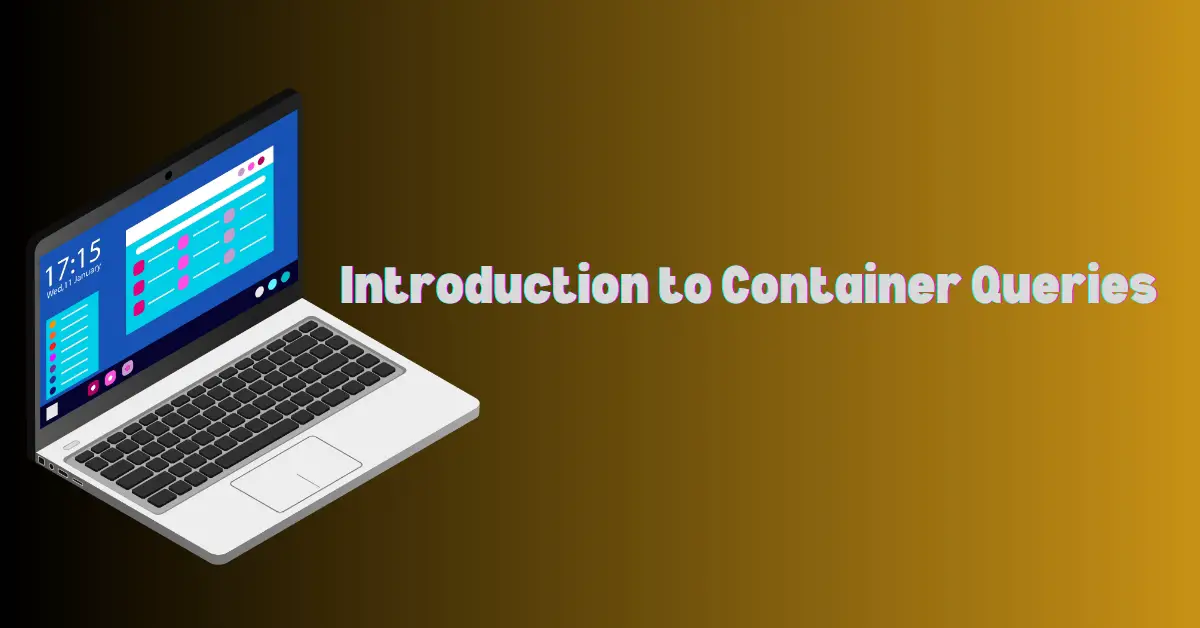|
Getting your Trinity Audio player ready... |
Introduction
In the evolving world of web design, responsive layouts have become crucial for creating user-friendly interfaces. For years, media queries have been the go-to method for making layouts adapt to different screen sizes. However, they come with limitations, particularly when dealing with complex layouts. This is where container queries come into play, offering a more granular level of control.
What are Container Queries?
Container queries allow elements to adapt to the size of their containing element, rather than the viewport. This enables more modular and component-driven design, where individual components can respond to their own container’s size, making layouts more flexible and scalable.
Why Use Container Queries?
The primary advantage of container queries is that they enable truly responsive components. With media queries, you could only adapt elements based on the viewport size, which often led to inflexible designs. Container queries change this by allowing components to be aware of their own context, making it possible to create layouts that work well in any container.
How Do Container Queries Work?
Container queries are implemented using the @container rule in CSS. This rule works similarly to media queries but applies to a specific container element rather than the entire viewport.
Here’s a basic example:
.container {
container-type: inline-size;
}
.card {
width: 100%;
padding: 1rem;
}
@container (min-width: 300px) {
.card {
display: flex;
padding: 2rem;
}
}In this example:
- The
.containerclass is defined withcontainer-type: inline-size;, which makes it a container query. - The
.cardclass styles change when the container’s width exceeds 300px.
Practical Use Cases
- Responsive Cards: Imagine you have a grid of cards. With container queries, each card can respond to the size of its container. This allows you to create a design that looks good whether the card is in a narrow sidebar or a wide main content area.
- Adaptive Navigation: You can use container queries to adjust a navigation menu based on the space available. For example, a horizontal menu could switch to a vertical layout when the container width becomes too small.
- Flexible Widgets: Widgets like carousels, charts, or forms can adapt to different sizes based on where they are placed within the layout.
Best Practices for Using Container Queries
- Component-First Design: Think of each component in isolation. Define how it should behave in different container sizes, which makes the entire design more modular and reusable.
- Combine with Media Queries: Container queries don’t replace media queries but complement them. Use media queries for global layout adjustments and container queries for component-level tweaks.
- Optimize for Performance: While container queries are powerful, they can be more resource-intensive. Use them judiciously to avoid performance bottlenecks.
Browser Support and Polyfills
As of now, container queries are still relatively new, with varying levels of support across browsers. They are well-supported in modern versions of Chrome, Edge, and Safari. However, for older browsers, you may need to use polyfills or fallback designs to ensure compatibility.
Conclusion
Container queries represent a significant step forward in responsive design, enabling more flexible and adaptive layouts. By allowing components to respond to the size of their container rather than the entire viewport, they open up new possibilities for creating truly modular and reusable design systems.
As browser support continues to grow, container queries will likely become a standard tool in every web developer’s toolkit. For now, start experimenting with them to see how they can improve the responsiveness and maintainability of your web projects.
For more insights into modern CSS techniques, check out other articles on Makemychance.com, where we delve deeper into the future of web design.
Arsalan Malik is a passionate Software Engineer and the Founder of Makemychance.com. A proud CDAC-qualified developer, Arsalan specializes in full-stack web development, with expertise in technologies like Node.js, PHP, WordPress, React, and modern CSS frameworks.
He actively shares his knowledge and insights with the developer community on platforms like Dev.to and engages with professionals worldwide through LinkedIn.
Arsalan believes in building real-world projects that not only solve problems but also educate and empower users. His mission is to make technology simple, accessible, and impactful for everyone.



